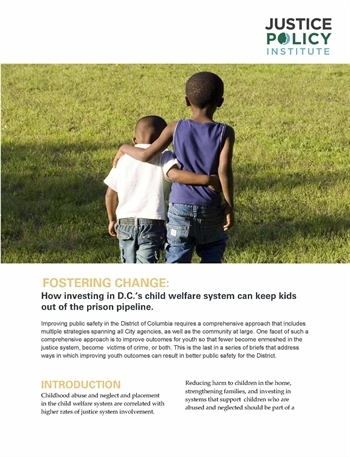This film is based on a series of briefs focusing on youth-serving systems in the District that include: education, mental health, employment and child welfare. When considered together, the research offers a blue print for improved systems and suggests collaboration in supporting youth to ensure better public safety outcomes for the District as a whole.
Many thanks to:
The Public Welfare Foundation
Different Avenues
DC Lawyers for Youth
Fostering Change: How Investing In D.C.’s Child Welfare System Can Keep Kids Out of the Prison Pipeline looks at the need for robust community investments to increase public safety and youth outcomes in areas such as Wards 5, 7 and 8, which are majority African American having also the highest rate of children living below the poverty line and in foster care. The District has one of the highest incarceration rates in the country, which has direct and long-term implications on the city’s youth.

Parental incarceration is now the third highest reason for child welfare system involvement in the District, following neglect and abuse. The community and family impacts of mass incarceration are disproportionately prevalent among African-American children and children of parents with low levels of educational attainment. Nationally, African-American children are three times more likely than Latino children and seven times more likely than white children to have a parent in prison and incarcerated parents tend to face significant barriers to retaining their parental rights.
Fostering Change is the fourth and last in a series of research briefs that shows reducing harm to children in the home, strengthening families, and investing in systems that support children who are abused and neglected should be part of a comprehensive public safety strategy in the District.
Download
Brief
Press Release
Related Documents
The series provides a blue print for improved systems and suggest collaboration in supporting youth to ensure better public safety outcomes for the District as a whole.
Mindful of the Consequences: How Improving the Mental Health of D.C. Youth Benefits the District